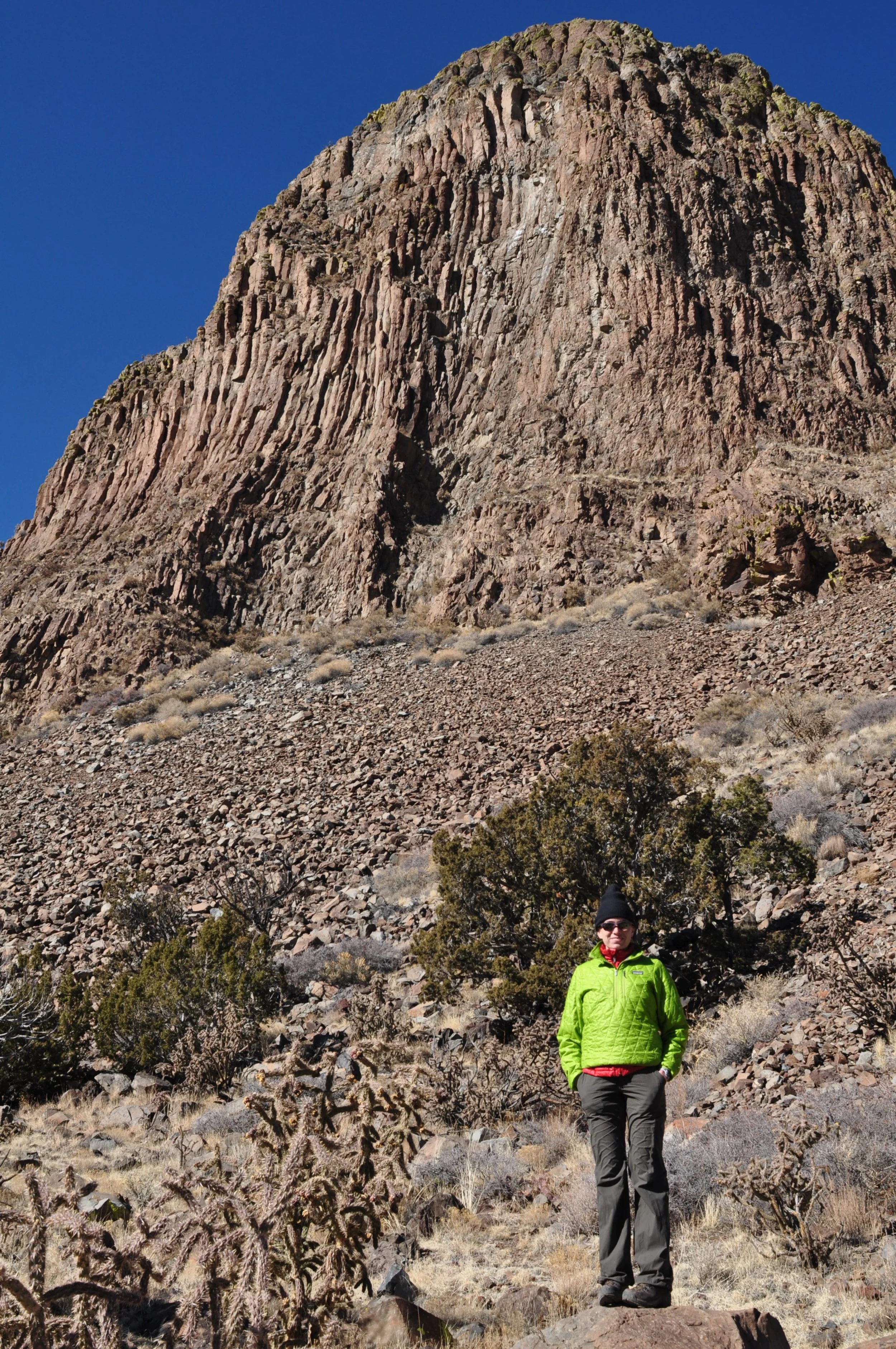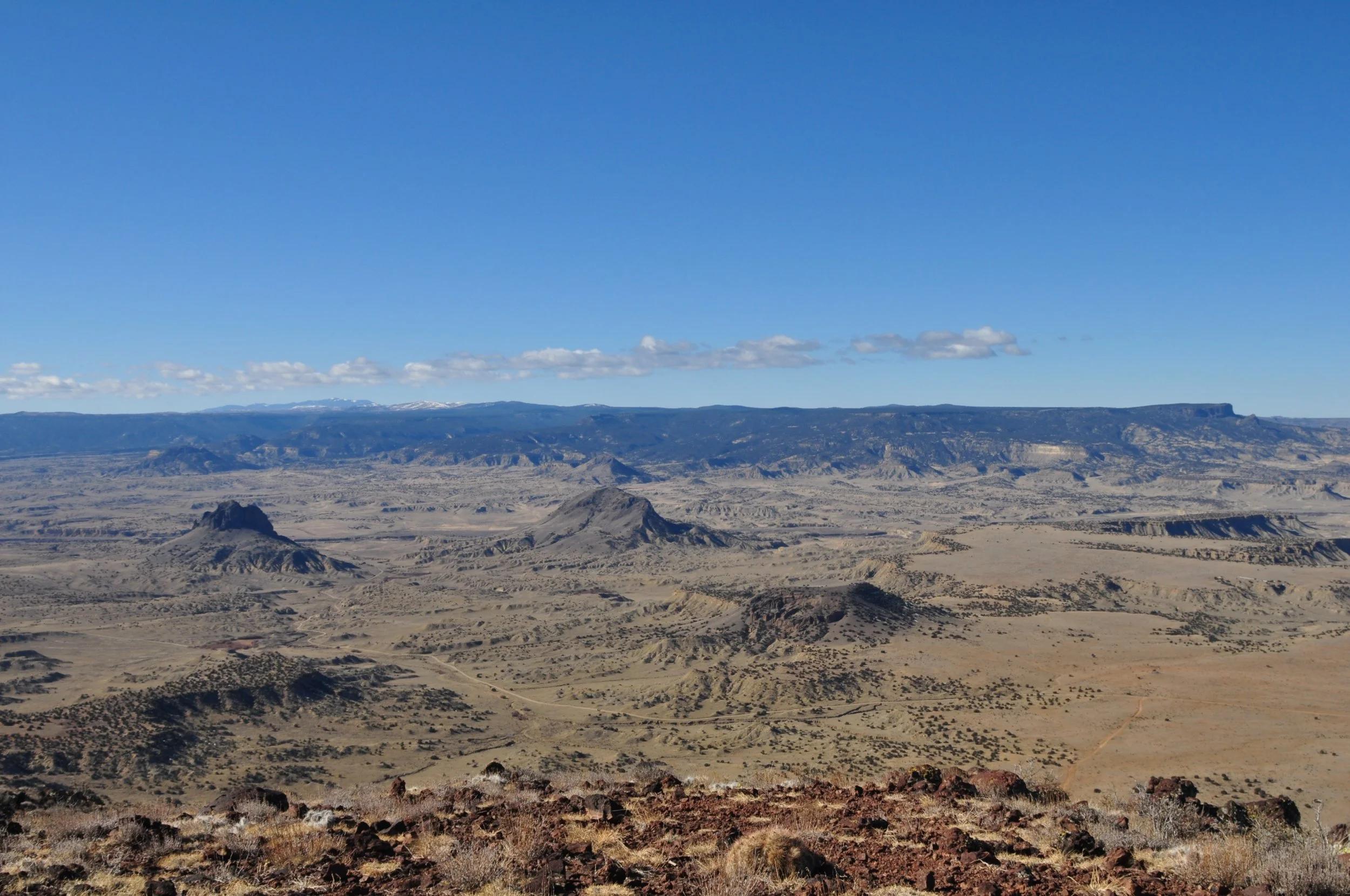Cabezon Peak
This striking landmark, visible for miles in northwestern New Mexico, is not a conventional volcano but a volcanic neck: the solidified magma that once filled the central vent of a small volcano.
Basaltic columns, formed as the basalt cooled, sweep upward. Cabezon Peak presents a challenging climb with high exposure and fantastic views of the Rio Puerco drainage from the top. Photo by John Donahue.
Towering over the wide badlands of the Rio Puerco drainage, Cabezon Peak stands as a dramatic volcanic monument rising more than 800 feet above the surrounding mesas. This striking landmark, visible for miles in northwestern New Mexico, is not a conventional volcano but a volcanic neck: the solidified magma that once filled the central vent of a small volcano.
Active about 2-4 million years ago, this young volcano intruded up through surrounding Cenozoic sedimentary units. Over time, erosion by wind, water, and the Rio Puerco’s dynamic drainage system stripped away the softer sedimentary rocks that once encased the intrusion, revealing the resistant basaltic plug we see today.
Unlike classic cones built from layers of lava and ash, Cabezon didn’t erupt to build its shape. Instead, magma intruded upward through the surrounding sedimentary strata, without ever breaking the surface in a large explosive eruption. Here, the lava cooled.
Sweeping views from the top of Cabezon Peak show other smaller volcanic necks, the larger Mesa Chivato, and Mt. Taylor in the far distance. Photo by Magdalena Donahue.
Cabezon Peak is part of the Mount Taylor volcanic field, which was active from about 4 to 2 million years ago. This field includes numerous volcanic features—cinder cones, lava flows, and plugs—spread across northwestern New Mexico. Cabezon’s preservation owes to the durability of the basalt magma, which cooled and solidified underground, forming a dense, erosion-resistant core.
From its base, you can clearly see the contrast between the dark, massive basalt of the neck and the gently dipping, lighter-colored sedimentary rocks it cut through. It’s a textbook example of differential erosion at work, where ancient magma now stands exposed as the surrounding landscape continues to wear away. Cabezon isn’t just a striking feature on the skyline—it’s a geologic cross-section in three dimensions, revealing both New Mexico’s volcanic past and the ongoing sculpting power of erosion.


